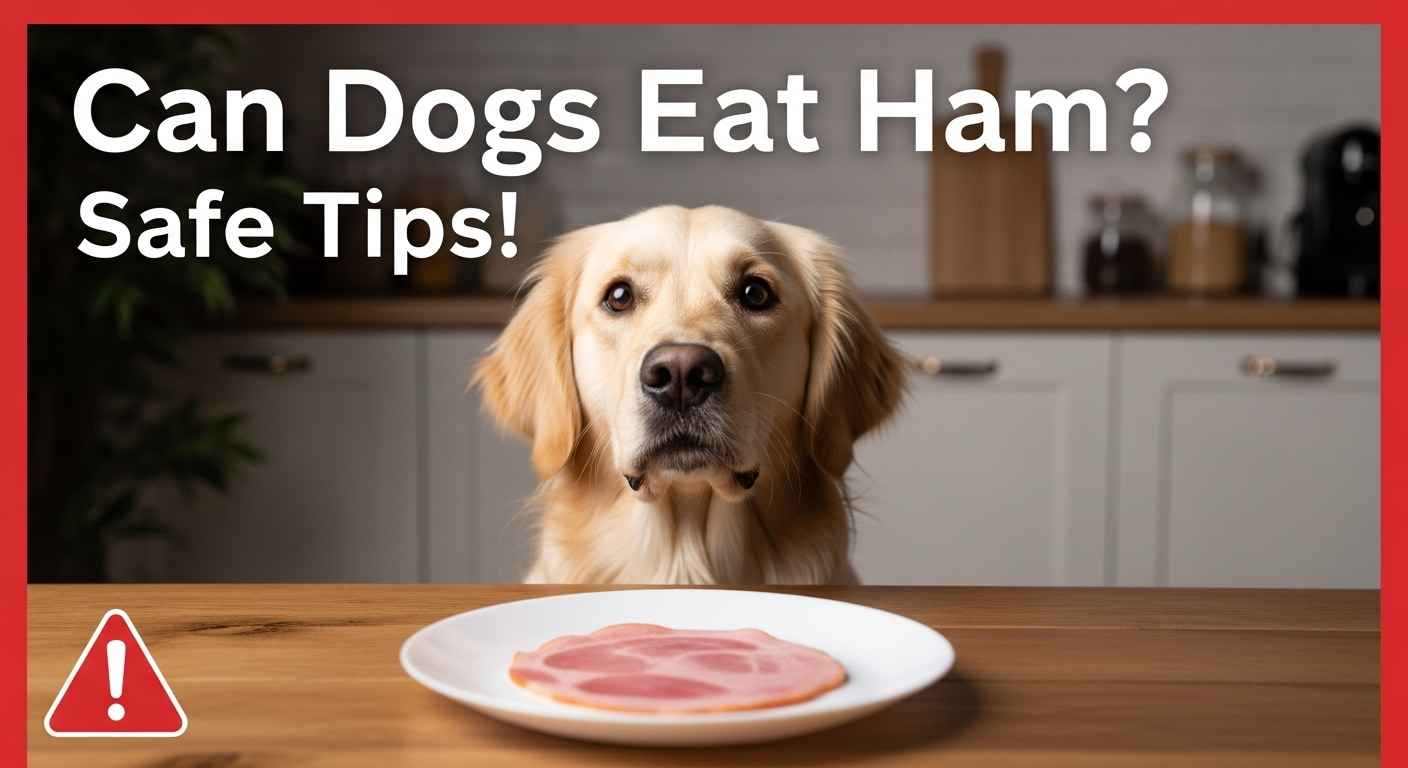Many dog owners face begging eyes at the dinner table. Ham smells good to dogs. But is it safe to share? This post answers that question. It covers risks, safe amounts, and better options. Talk to your vet before giving new foods. Use our pet food safety checker for quick advice.

Why Ham Poses Risks for Dogs
Ham comes from pork. It’s often cured with salt and smoked. This process adds sodium and fat. Dogs need protein, but ham’s extras cause problems.
High sodium leads to thirst and more trips outside. In large amounts, it causes salt poisoning. Signs include vomiting, weakness, and seizures. Kidneys and heart suffer over time.
Fat in ham upsets stomachs. It can trigger pancreatitis. This swells the pancreas. Dogs feel pain, lose appetite, and act tired. Vets treat it with rest and fluids, but bad cases need hospital care.
Some hams have sugar or spices. Glazed types add calories. This risks weight gain and diabetes. Preservatives like nitrates harm cells in big doses.
Raw ham brings bacteria like salmonella. Cooked ham is safer, but still watch out.
Puppies and small dogs face bigger risks. Their bodies handle salt and fat less well. Older dogs or those with kidney issues should skip it too.
See our post on can dogs eat bacon for similar pork risks.

When Small Amounts Might Be Okay
A tiny plain piece of cooked ham won’t harm most healthy dogs. Trim fat and skip seasonings. Give it rarely, like once a month.
Treats should stay under 10% of daily calories. For a 20-pound dog, that’s about 200 calories total. One small ham bit fits as an occasional reward.
Always check labels. Low-sodium ham cuts risks. But plain is best.
If your dog has health problems, ask your vet first. They know your pet’s needs.
What If Your Dog Eats Ham?
Don’t panic if your dog grabs a bite. Note the amount and type. Watch for issues over 24 hours.
Look for:
- Vomiting or diarrhea
- Extra thirst or peeing
- Belly pain or whining
- Acting weak or shaky
Small amounts often pass without trouble. Offer water and skip food for a few hours. Walks help digestion.
For big amounts or bones, call your vet now. They may induce vomiting or check with x-rays. Bones splinter and block insides.
Use our pet symptom checker to track signs.
Dangers of Ham Bones
Skip ham bones every time. Cooked ones splinter into sharp bits. These cut mouths, throats, or guts. They cause choking or blockages that need surgery.
Raw bones carry germs. Even safe-looking ones risk broken teeth.
Choose rubber chews or vet-approved toys instead. They clean teeth without harm.
Better Treat Choices for Dogs
Pick lean proteins over ham. Cooked chicken or turkey works well. Boil or bake without salt.
Safe veggies add crunch:
- Carrots for vitamins
- Green beans for fiber
- Apple slices, seeds out
Fruits like blueberries give antioxidants. Check our guide on what fruits can dogs eat.
Store treats keep things balanced. Look for low-fat options.
For veggie questions, see can dogs eat broccoli.

Answers to Common Questions
Can Dogs Eat Cooked Ham?
In very small bits, yes, if plain. Avoid glazed or spiced kinds. Fat and salt still add up.
Is Deli Ham Okay for Dogs?
No. It’s packed with sodium and additives. One slice often hits daily limits.
Can Puppies Have Ham?
Skip it. Pups have tender tummies. Puppy food meets their needs best.
What About Honey Ham?
No. The sugar boosts calories and upset risks. Plain cooked pork is safer, but rare.
Can Dogs Eat Ham Hocks?
Avoid them. They’re fatty and often salted. Choking or digestion issues follow.
Is Spiral Ham Safe?
Only tiny plain pieces. Glazes have sugar and spices that harm dogs.
For spice safety, read is cinnamon bad for dogs.
How to Keep Meals Safe
Store ham high or in closed spots. Train “leave it” to stop begging. Feed dog food first at meals.
Weigh your dog often. Extra pounds from treats hurt joints. Use our pet age calculator for health tracking.
If adding a new pet, try the pet compatibility checker.
Ham tempts dogs, but smart choices keep them well. Stick to vet advice for long lives.
